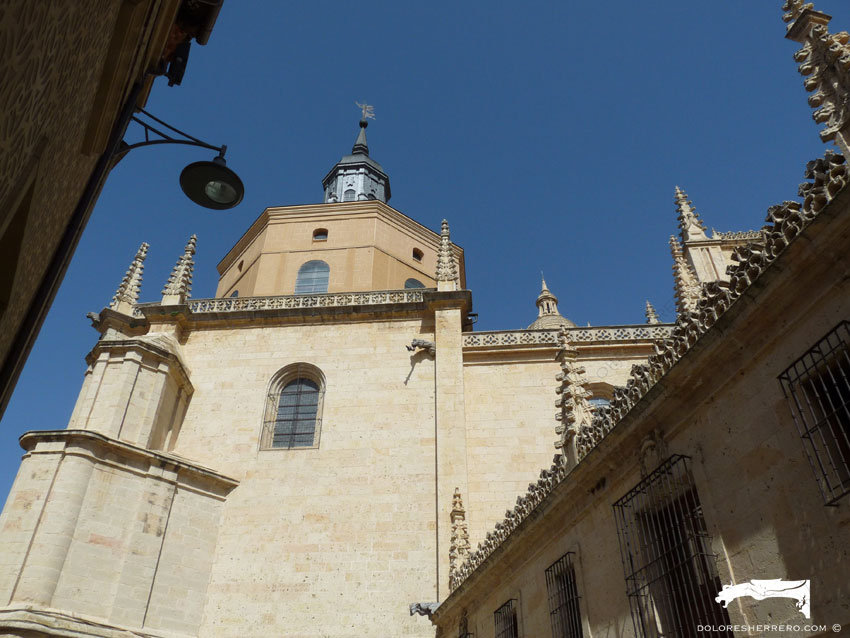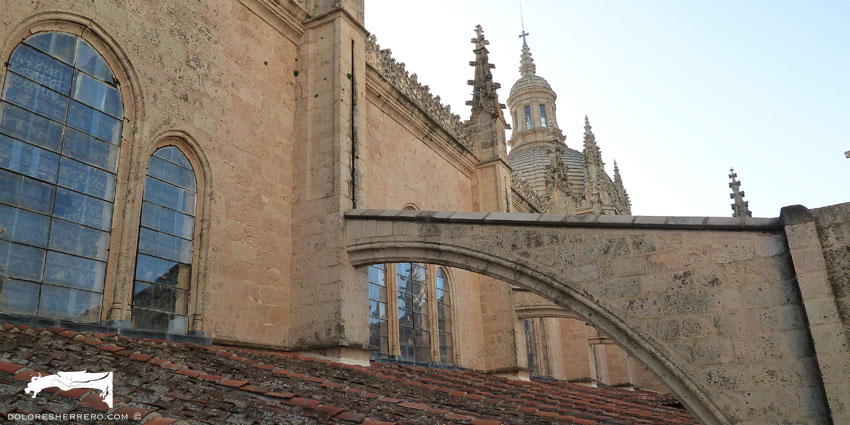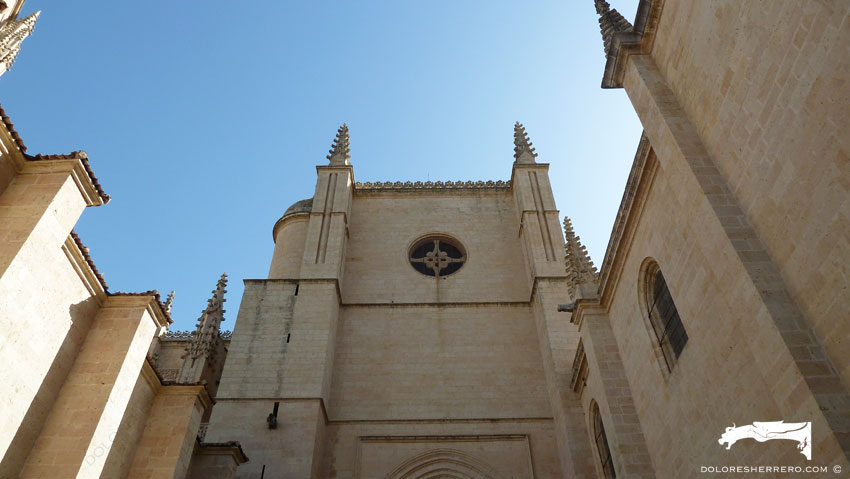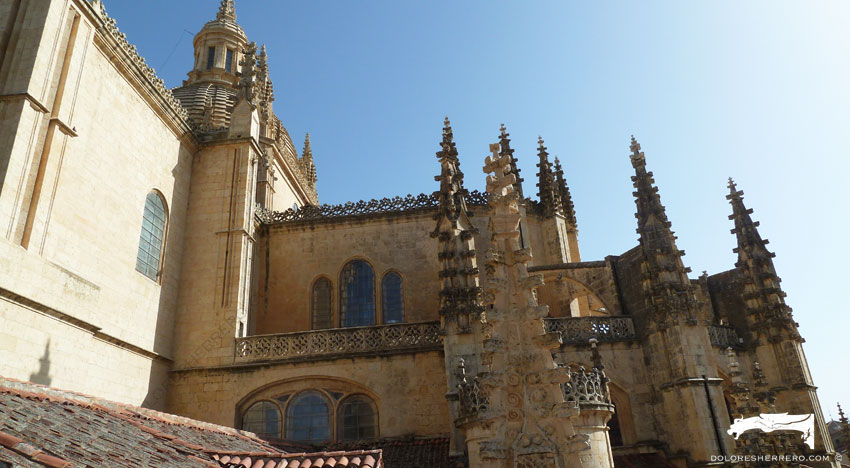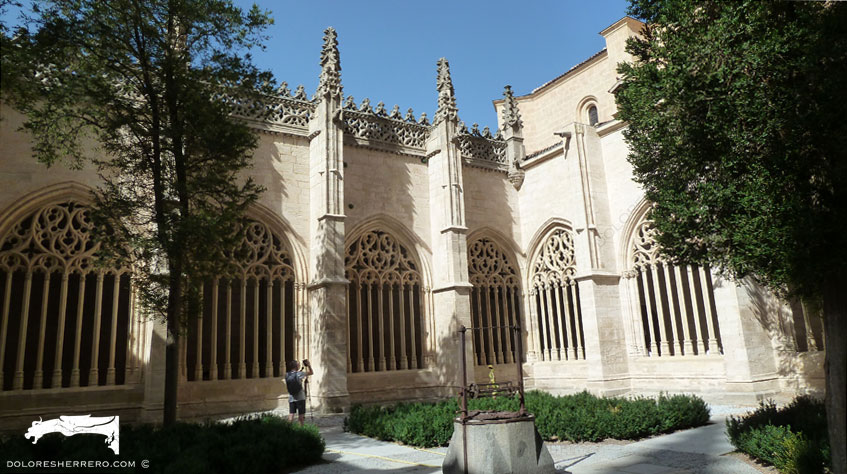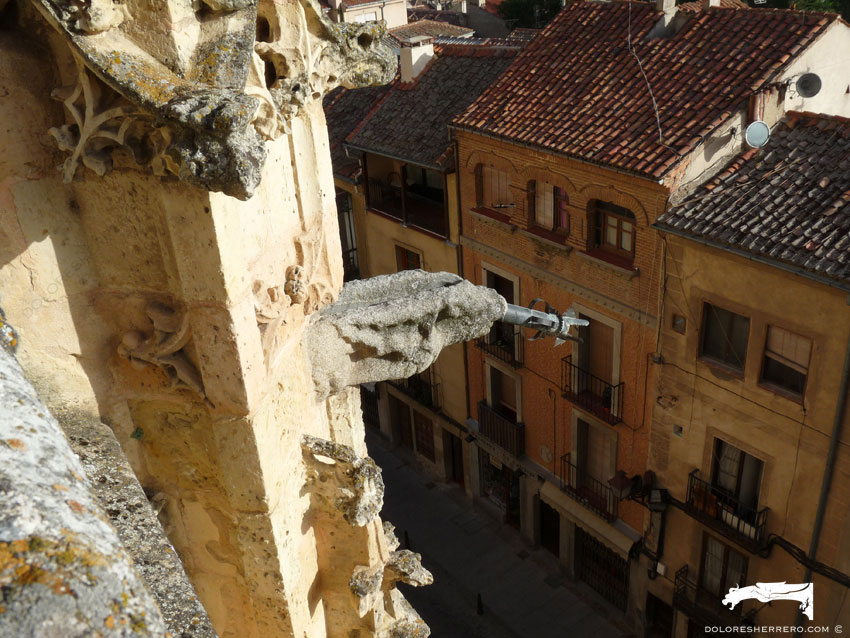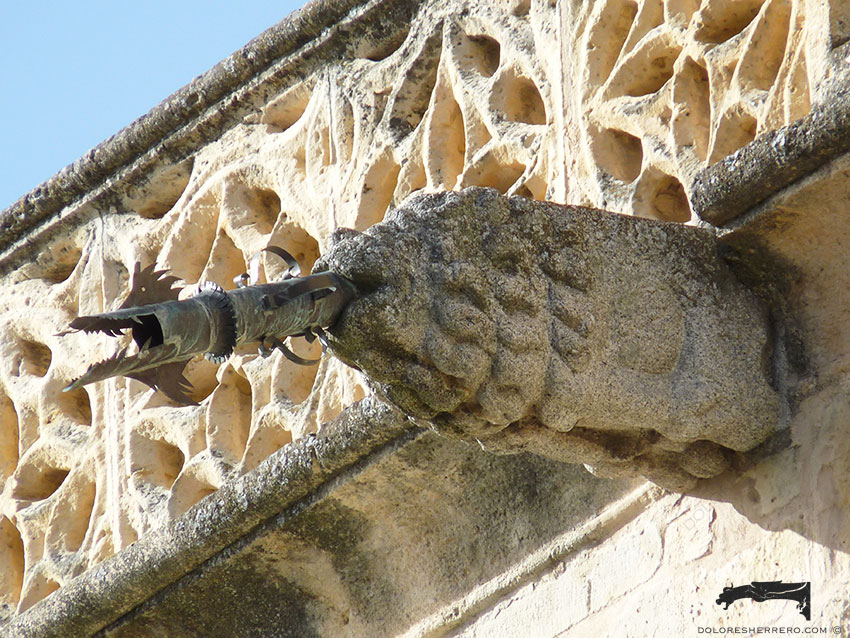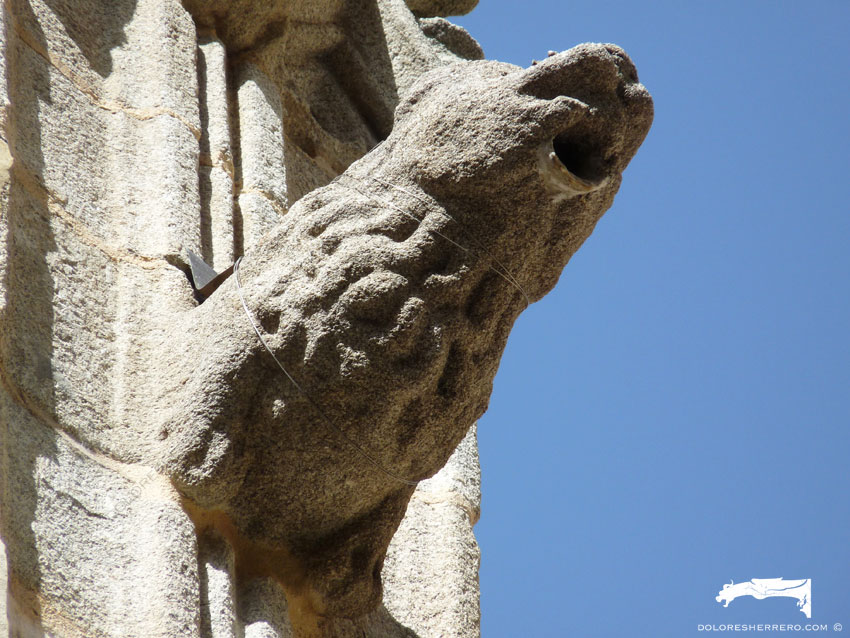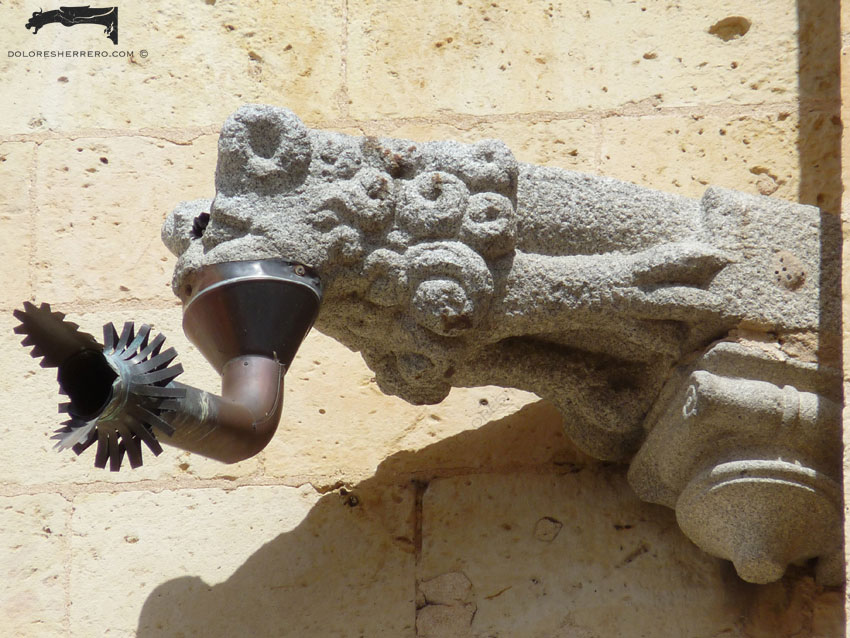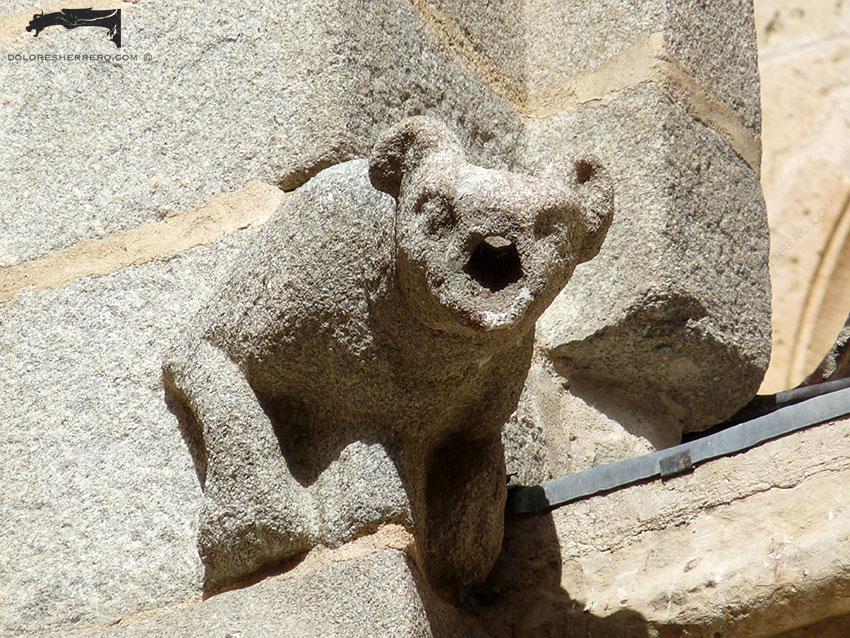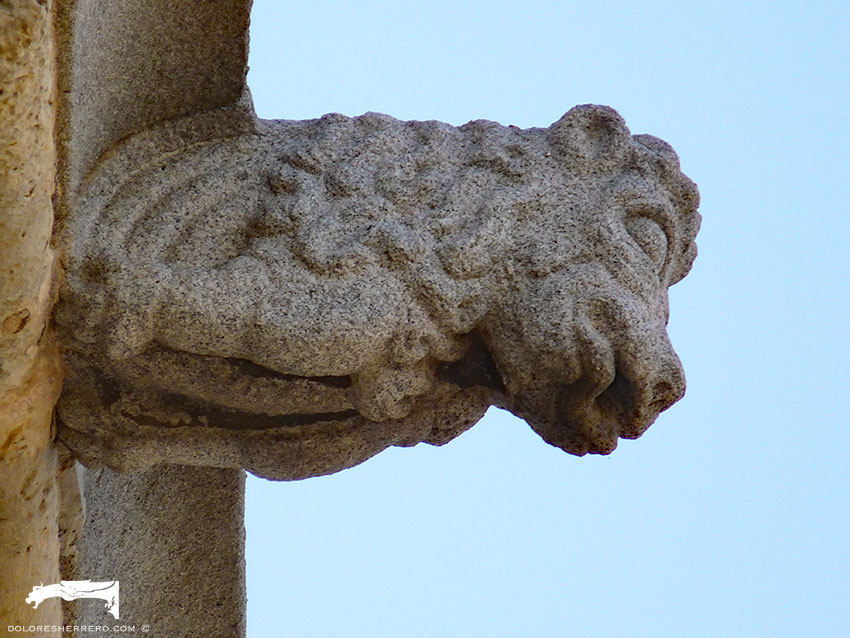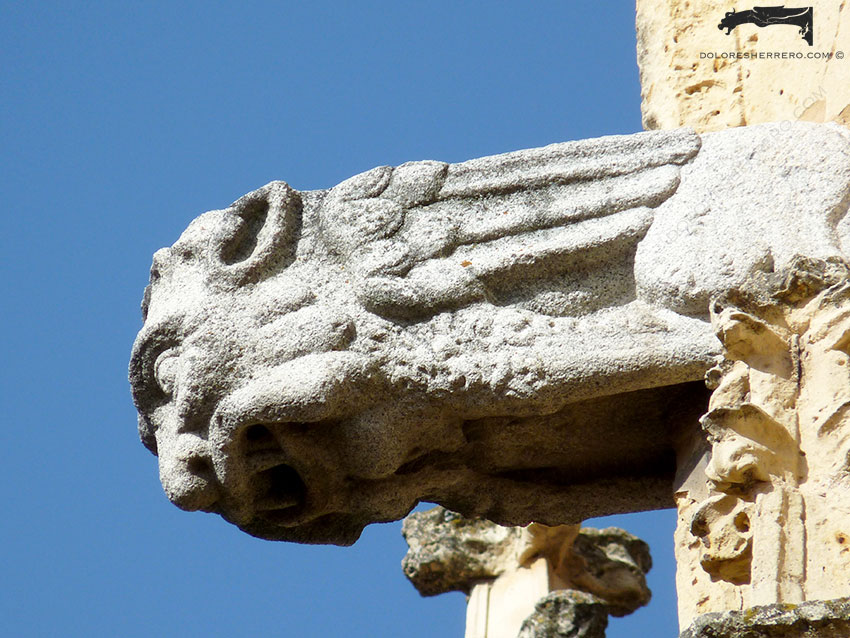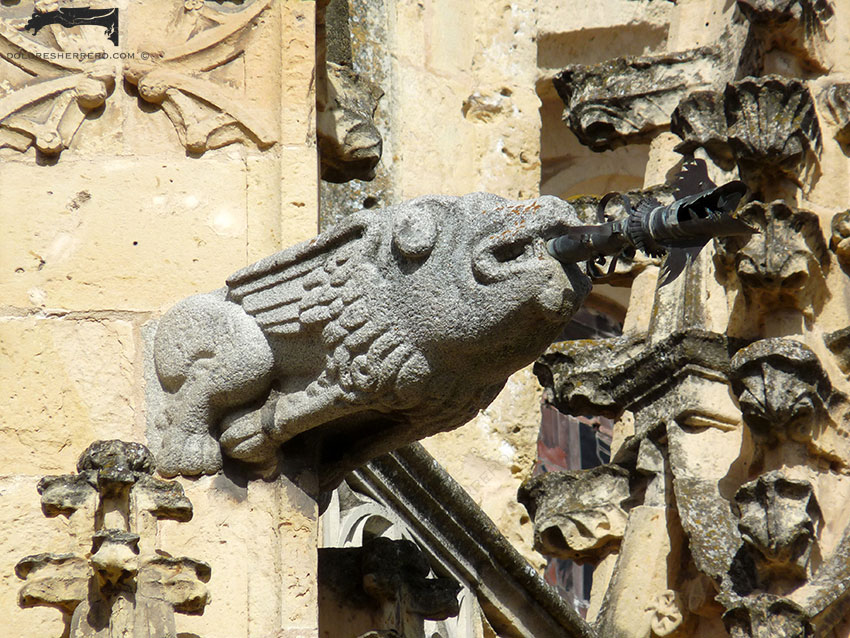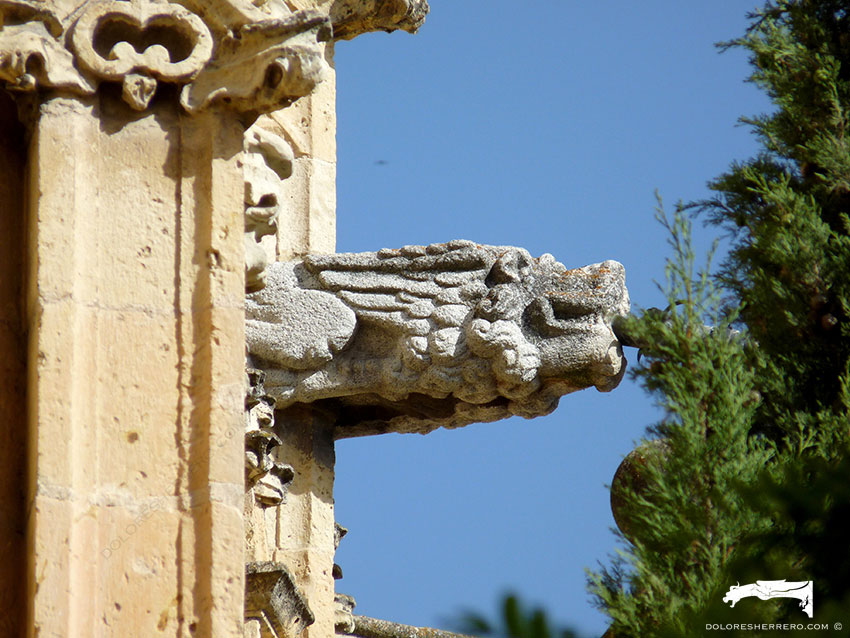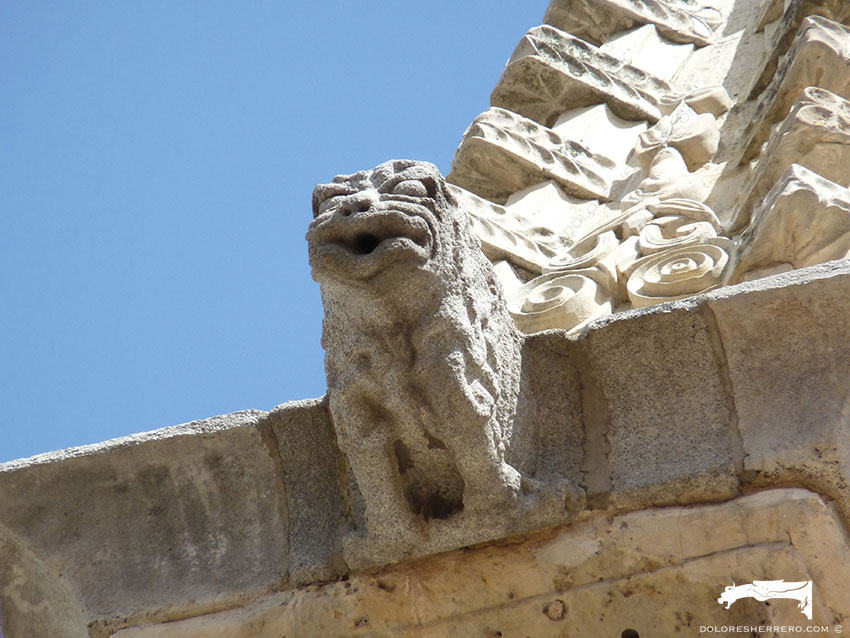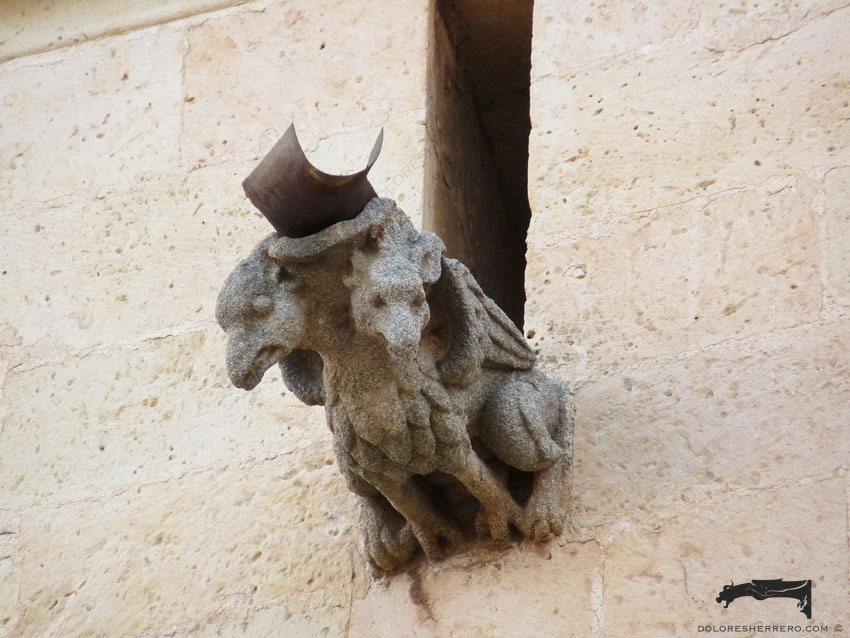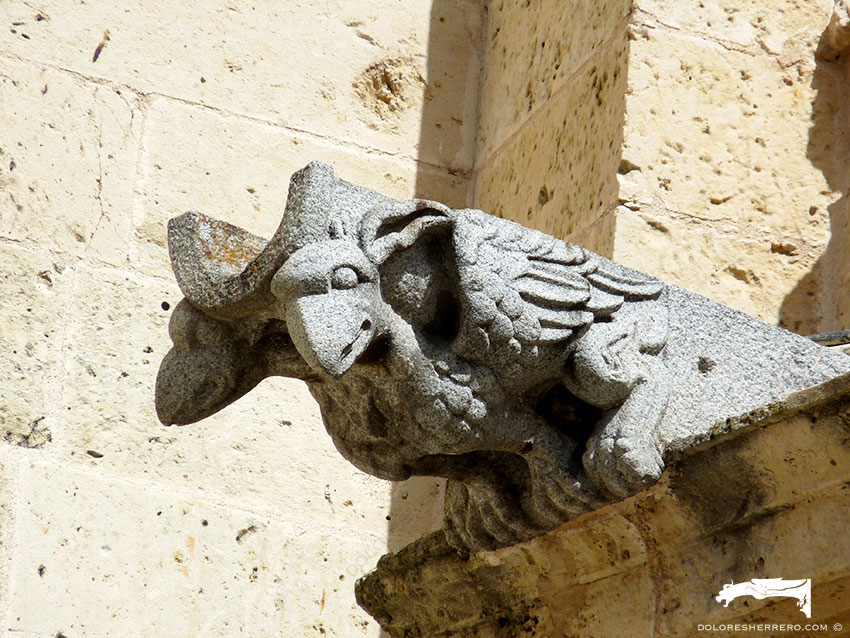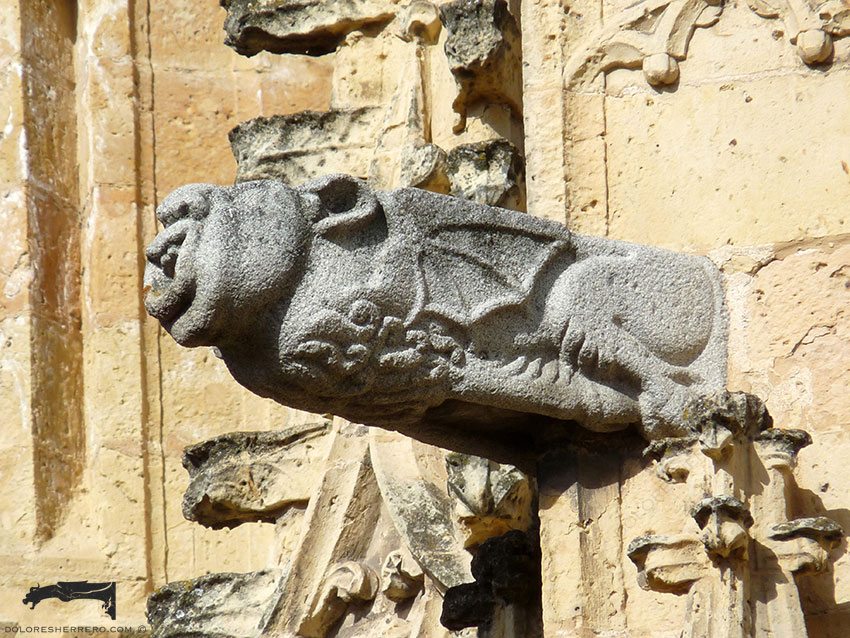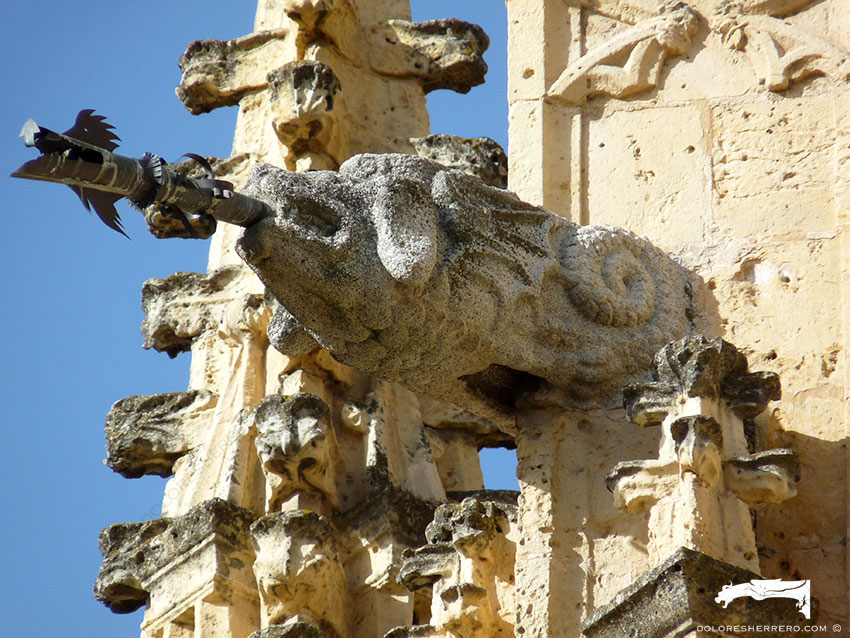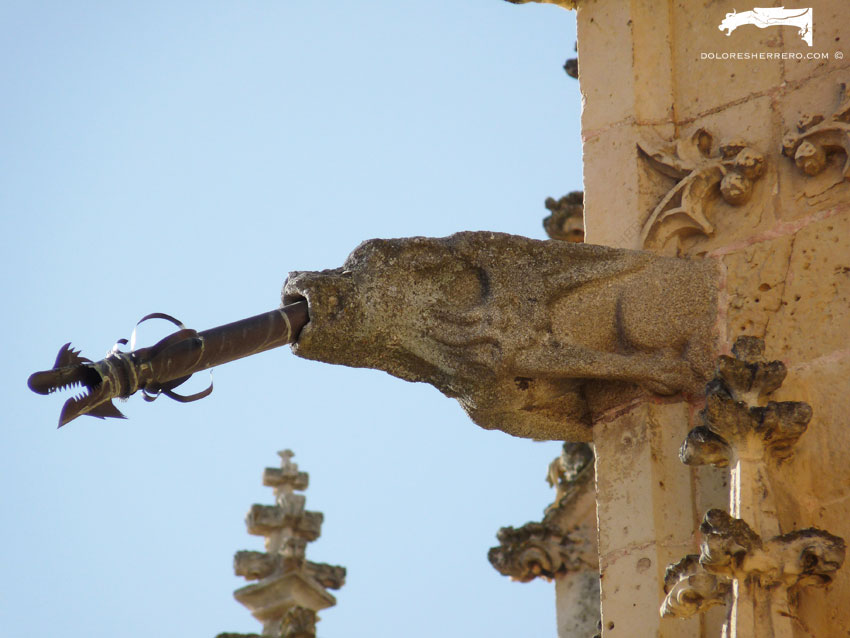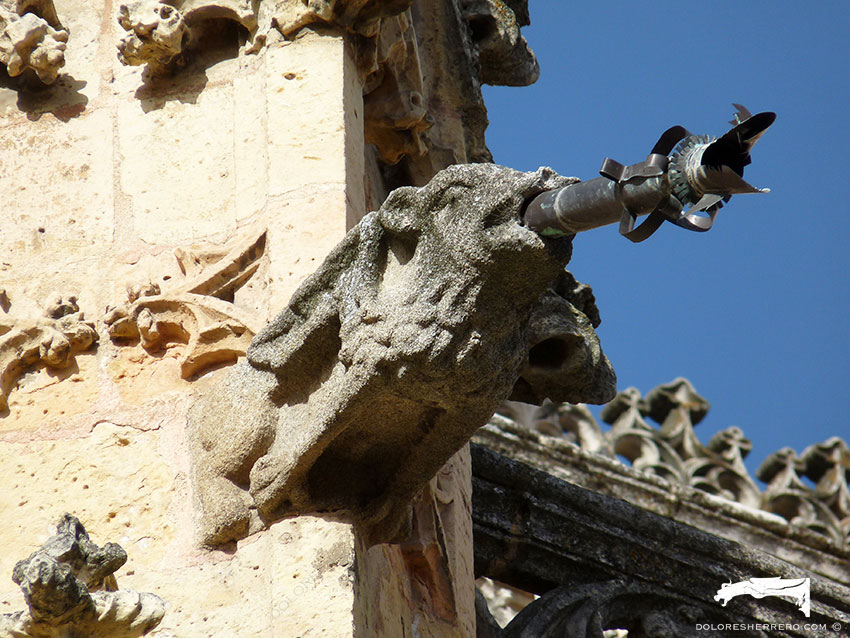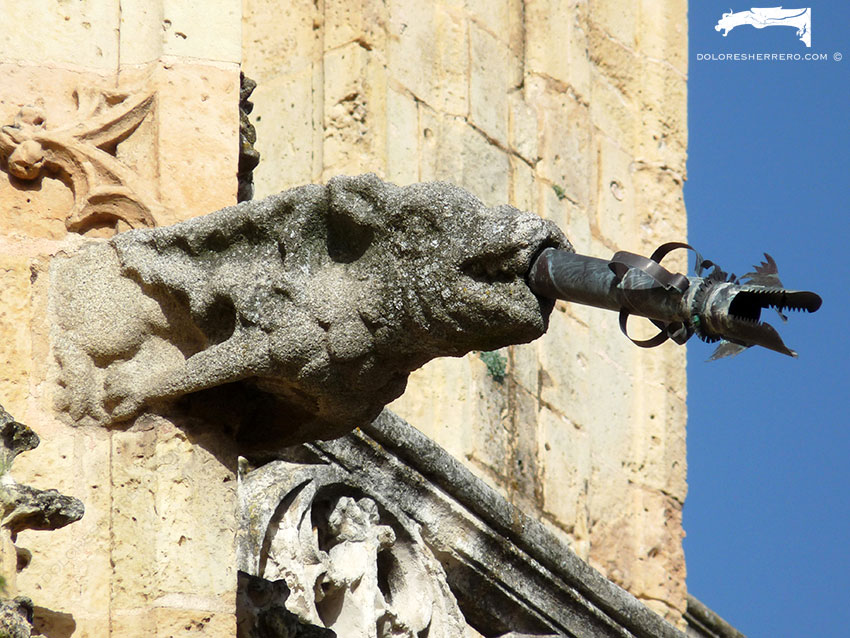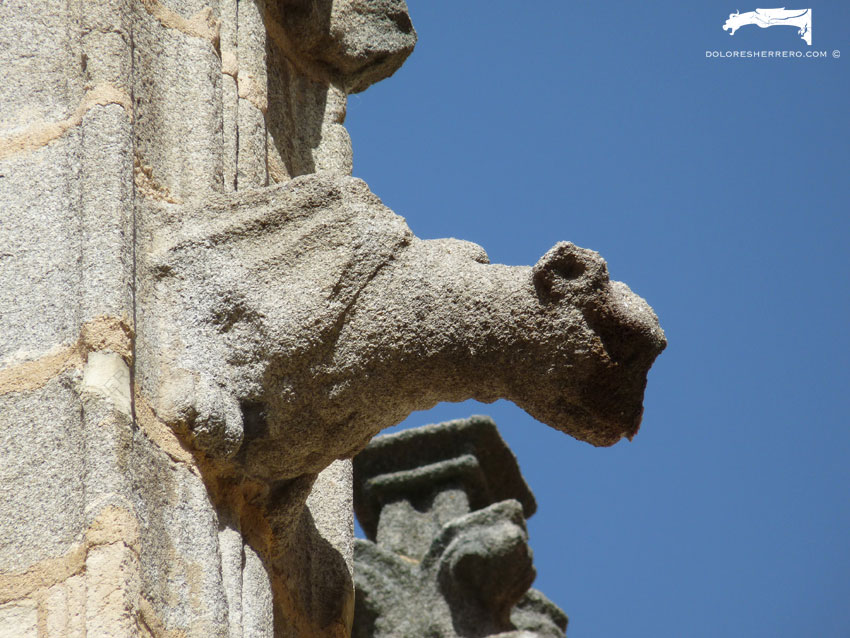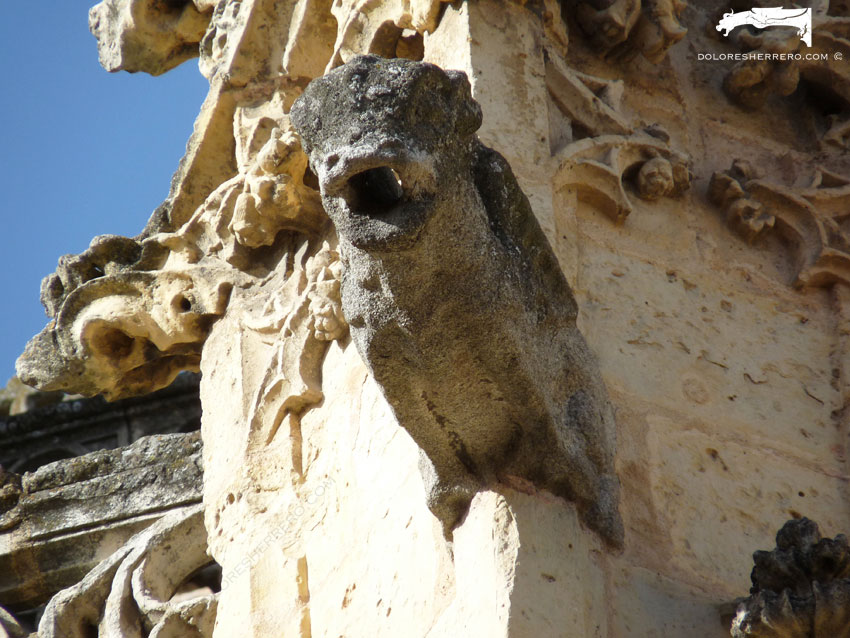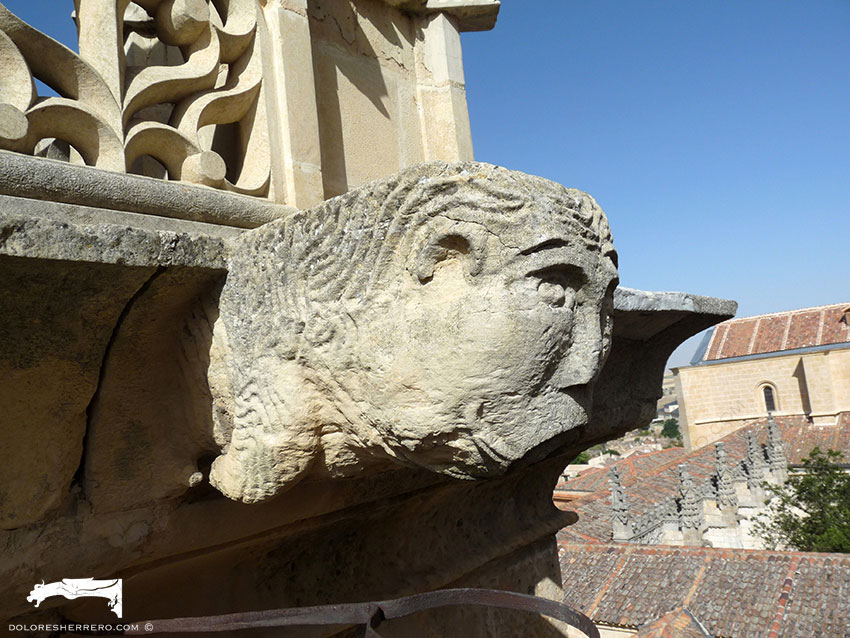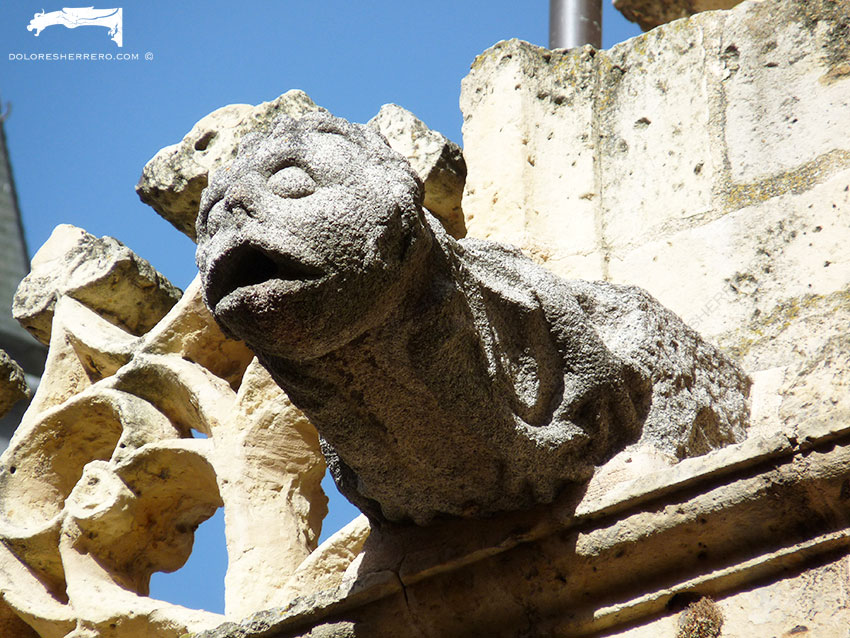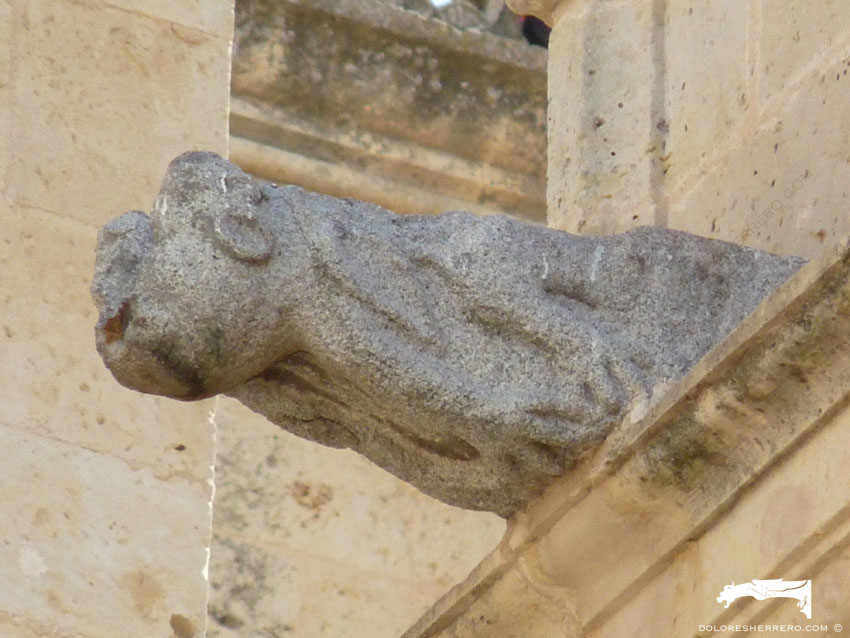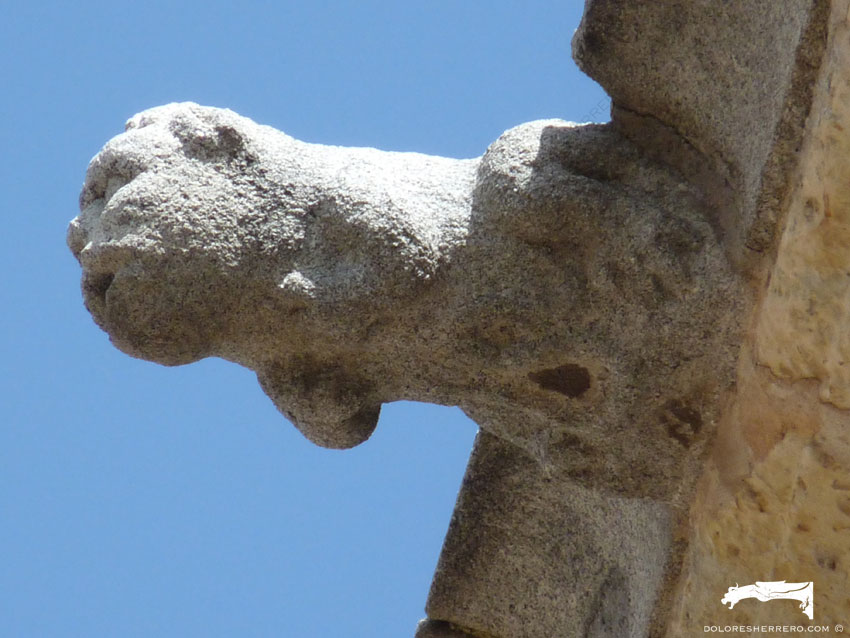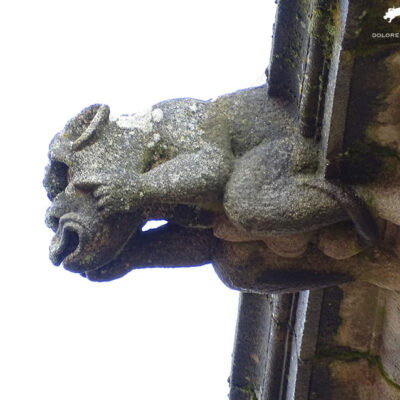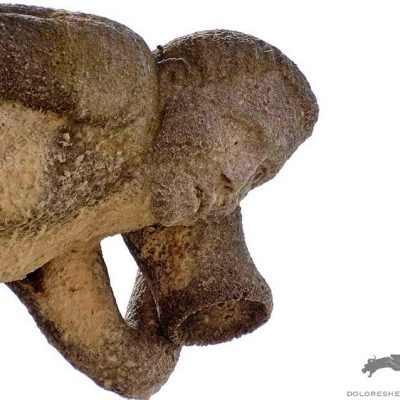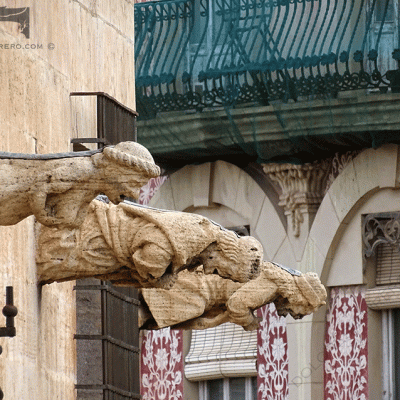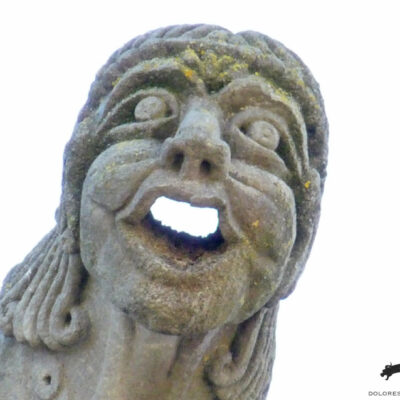The Cathedral of Segovia (Spain) was built between the 16th and 18th centuries. It is considered one of the best surviving examples of 16th century Gothic architecture.
In 1520, the cathedral suffered severe damage and plans were made to rebuild it or raise a new one elsewhere. In 1523, Carlos I authorised the construction of a new cathedral, and the first stone was laid on the 8th of June, 1525. Eminent talented architects, including Juan Gil de Hontañón, Rodrigo Gil de Hontañón (16th century) and the Baroque architect from Segovia, Pedro de Brizuela (17th century), were involved in its construction. They were all masters of their craft, who added elements from other styles, transforming the Cathedral of Segovia into a jewel of Spanish artistic heritage.
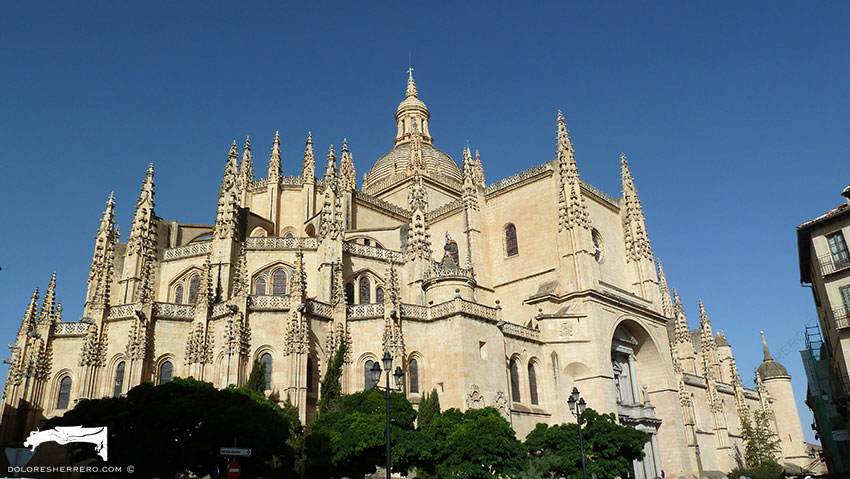
Gargoyles
Next, we will look at the fantastic gargoyles of the cathedral by types. Some of them have a long metal spout in their mouth decorated with a head featuring serrated teeth and crests.
We start with the animals, where we can see lions and a dog which appear to be stalking.
The animal monsters are mostly winged lions. There is also a winged dog with a collar, as well as some superb two-headed beasts, hybrids of an eagle and a quadruped.
Devils figure here too, some of them with very original and peculiar features in addition to the usual ones for this type, including dog or pig heads; huge, coiling serpent-like tails; scales; membranous wings, some decorated with eagle heads; faces with protuberances and flaps; long fangs that reach the lower part of the mouth in a ferocious expression; and crests down to the nose.
Various anthropomorphs are also depicted. Some have an amphibious or reptilian body, short front and hind legs and a human face.
The iconography is varied. They have been expertly sculpted with great attention to detail and expressiveness, with a ferocious demeanour and a grotesque and even terrifying appearance.
Eminent brilliant architects and sculptors have bequeathed us some truly amazing artistic treasures: magnificent cathedrals with their facades, pinnacles, portals and, of course, their fascinating gargoyles.
The gargoyles of the Segovia Cathedral are a magnificent example of uniqueness and artistic creativity.
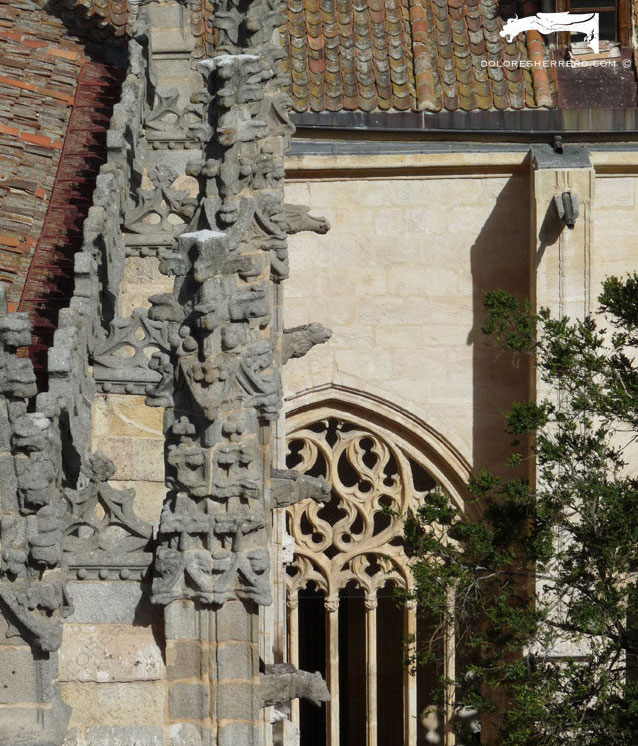
Bibliography consulted
CHUECA GOITIA, F., Historia de la Arquitectura Española. Edad Antigua y Edad Media, Edición Facsímil de la de 1964, Ávila, Fundación Cultural Santa Teresa, 2001.
PÉREZ MONZÓN, O., Catedrales góticas, Madrid, Ediciones Jaguar, S. A. Catedrales de España, 2003.

Doctor of Art History and researcher specializing in the study of gargoyles.
I am Dolores Herrero Ferrio, and my thesis, “An Approach to the Study of Gargoyles of Gothic Cathedrals in Castilla and León”, is dedicated to the study of these fascinating figures.
If you like gargoyles and art history, you will also enjoy my book, “The Gargoyle and Its Iconography,” a book I have written with great care for those interested in the world of gargoyles.
I have created my own Encyclopedia of Gargoyles, a Gargopedia to share with you, where you will discover all the secrets and wonders of these enigmatic sculptures.
I hope you enjoy this Gargopedia as much as I have enjoyed creating it, and remember that each gargoyle has a story to tell, and here you will discover them all.


